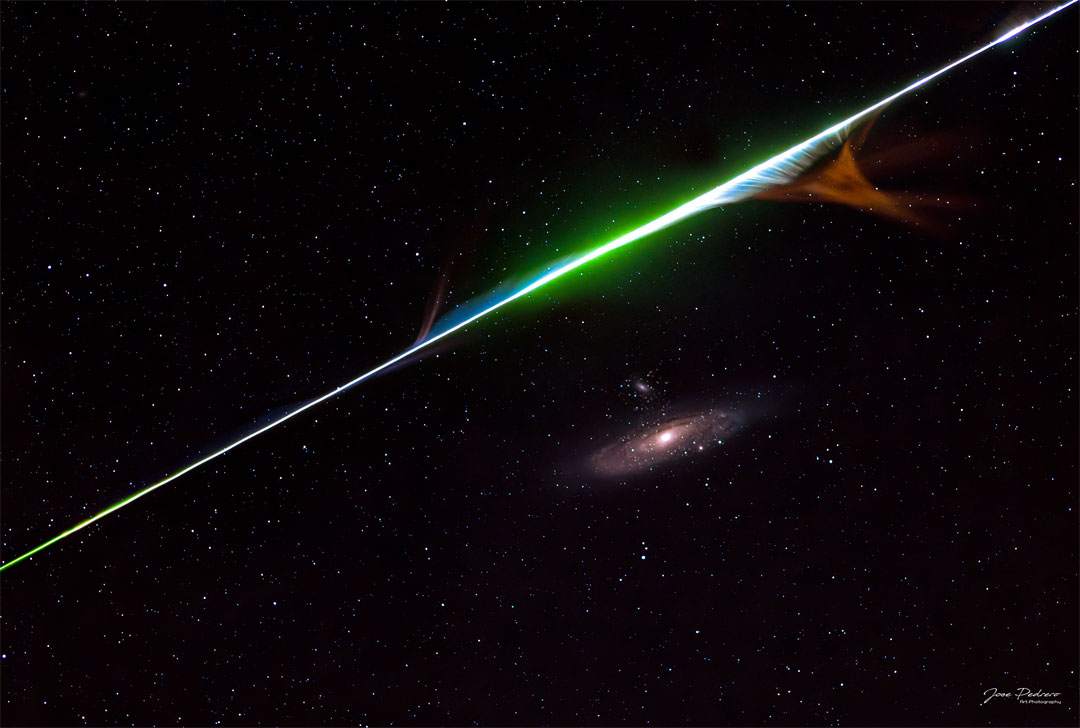2023年8月23日
The Meteor and the Galaxy
Credit & Copyright: Jose Pedrero
Explanation: It came from outer space. It — in this case a sand-sized bit of a comet nucleus — was likely ejected many years ago from Sun-orbiting Comet Swift-Tuttle, but then continued to orbit the Sun alone. When the Earth crossed through this orbit, the piece of comet debris impacted the atmosphere of our fair planet and was seen as a meteor. This meteor deteriorated, causing gases to be emitted that glowed in colors emitted by its component elements. The featured image was taken last week from Castilla La Mancha, Spain, during the peak night of the Perseids meteor shower. The picturesque meteor streak happened to appear in the only one of 50 frames that also included the Andromeda galaxy. Stars dot the frame, each much further away than the meteor. Compared to the stars, the Andromeda galaxy (M31) is, again, much further away.
Tomorrow’s picture: perseids of summer
流星与星系
影像提供与版权: Jose Pedrero
说明: 它来自外太空。此处所谓的“它”,是指沙粒大小的彗核碎片,它可能是绕行太阳的史威福-塔托彗星在多年前喷出来的,然后孤单的持续绕太阳运行。每当地球穿过这个轨道时,彗星碎片就会撞击地球的大气层,成为我们所见的流星。而影像中的这颗流星更发生崩解,所释出的气体受到激发并散发出其组成元素的特征色泽。这幅主题影像是在上星期摄于西班牙的卡斯提亚-拉曼查自治区,时值英仙座流星雨的极大期。美丽的流星痕只出现在为仙女星系所拍摄的50张照片之一。散布在视野里的每颗恒星,都比流星更远;而与恒星相比,仙女星系(M31)更加遥远。
明日的图片: perseids of summer







